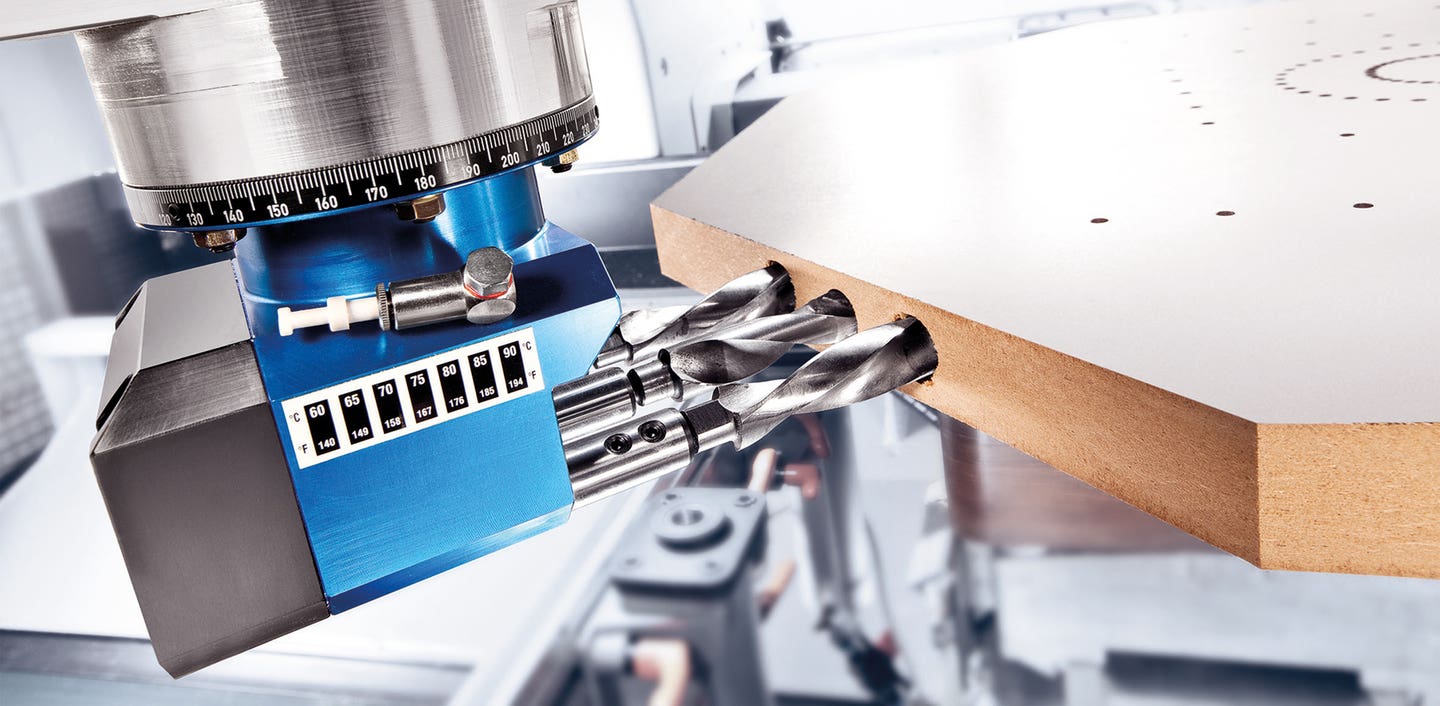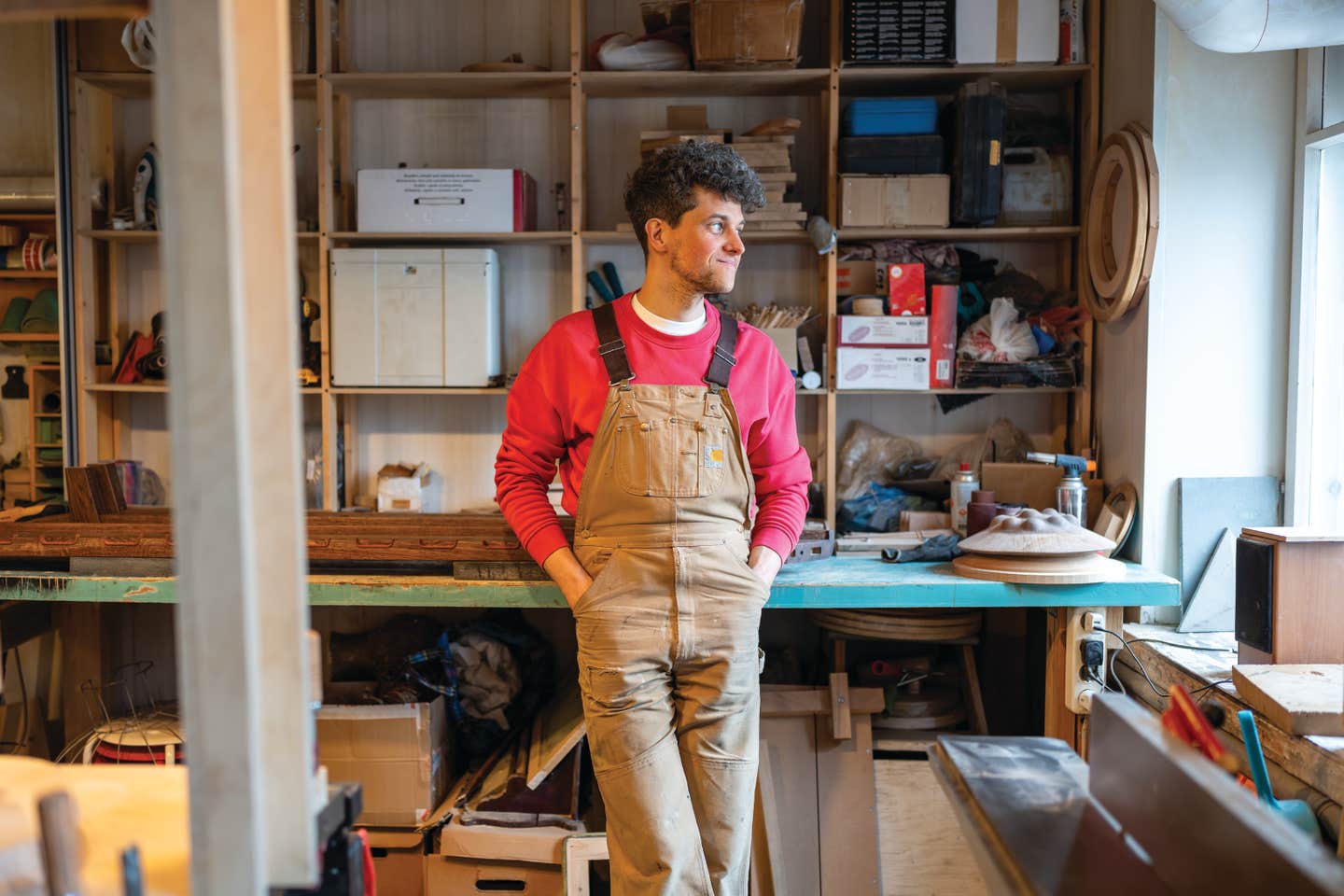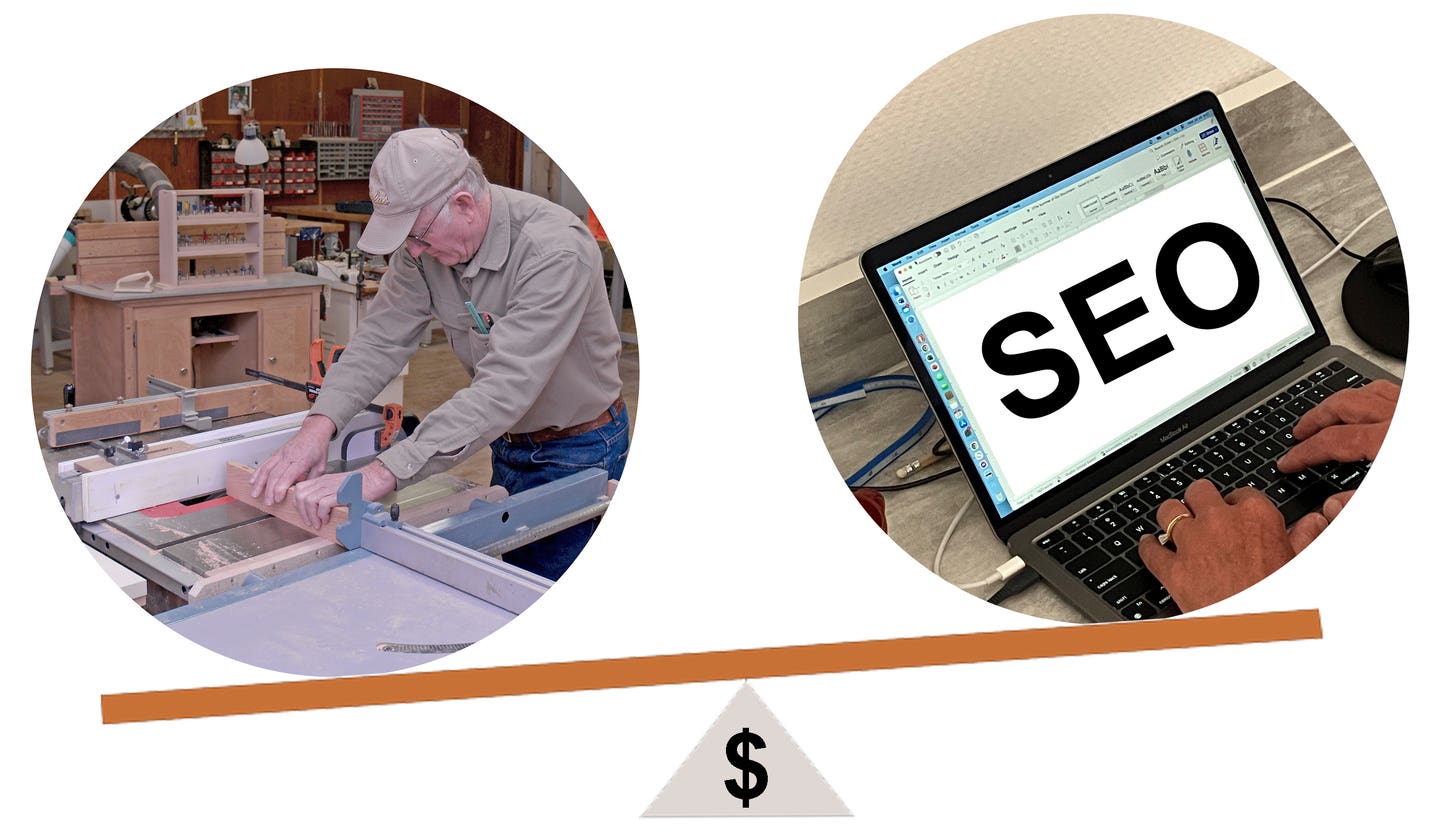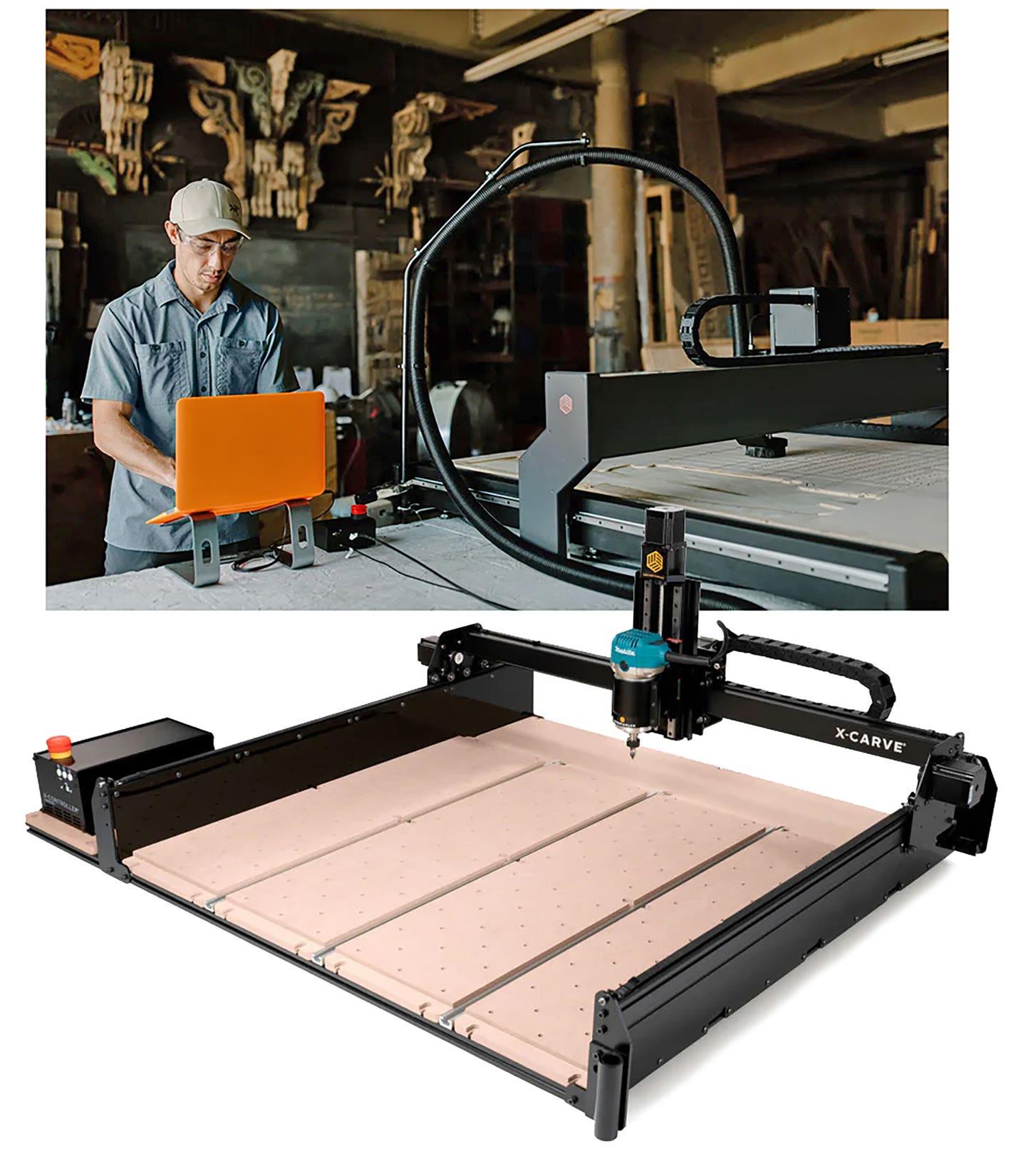Feed the beast
Since their inception, everything in a traditional woodshop has revolved around the table saw. Without it, reduction (the process of reducing raw materials such as sheet goods and boards to…
Since their inception, everything in a traditional woodshop has revolved around the table saw. Without it, reduction (the process of reducing raw materials such as sheet goods and boards to individual parts or components) can’t take place.
Today’s computer-controlled beam saws are all descended from a simple hand-operated rip saw (see sidebar), and they all still operate on the same basic principal: feed something across a table through a blade. Only nowadays, it’s usually the table that moves, rather than the wood.
In between large beam saws and a basic cabinet or contractor saw is an option that has been around a long time. In 1906, a frustrated German furniture builder, Wilhelm Altendorf, wanted a saw that offered accurate repeatability combined with more safety features and faster processing. So he designed the first sliding table saw, where the wood passes through the blade on a gliding platform. From that humble origin, the modern slider has become a marvel of technology and is the standard machine in most custom shops. For woodworkers looking to upgrade to one, there are a lot of options to peruse.
Leading off
According to Stiles Machinery (www.stilesmachinery.com), Altendorf still manufactures seven of every 10 sliding table saws that are sold in the U.S. The company offers two lines, the F45 series and the WA series. The F45 models (six options available) are all motorized and programmable and they’re operated through LCD and touch-screen controllers. They have the company’s legendary double-roller carriage system (which is incredibly smooth), a 126” sliding table length, and a 51” rip fence. Each saw also comes with 2-axis scoring, with Altendorf’s proprietary Rapido system on board. That’s an arrangement designed for rapid adjustment of the scoring blade without the need for shims. The width of the blade’s kerf can be adjusted using a quick set tool, which cuts out a lot of downtime.
The 7-1/2-hp gateway model F45 has a rip fence that comes with its own integrated digital display and it’s micro-adjustable to 0.004”. If you’ve been using a manual fence, this is a startling transition that really speeds up production work. The F45’s programmable controller is very intuitive and shops moving up to CNC won’t have too much of a learning curve. The controls include programmable rise, fall and tilt of the blade and a crosscut miter fence that has “integrated length compensation” (which means it figures out the angles). As of May, a woodshop could trade in any conventional table saw, sliding table saw or vertical panel saw at Stiles and get the new F45 Edition for $23,990.
Starting at around half that cost, Altendorf’s WA-6 is intended for the entry-level market. This, and the larger WA-8 (which is comparable in price to the basic F45) are exquisitely engineered machines that deliver torsion-resistant, smooth and stable action. The main differences between the WA series and the F45 line are manual controls and less capacity in some instances. There’s a 4-hp model (the single-phase WA 6) and a 7-1/2-hp version (the WA 8X). In terms of capacity, the maximum blade diameter on the 6 is 315mm (12.4”), and on the 8 is 400mm (15.75”).
While the WA 8X offers three blade speeds (3,000, 4,000 and 5,000 RPM), the WA 6 runs at 4,200 RPM. It has an 8-1/2 foot sliding table, a tilt adjustment readout that is nicely located at an easy-to-read dial right on the hand wheel and the company’s Rapido shimless scoring unit. The WA 6 also has a crosscut miter fence that comes with two manually adjusted flip stops that are adjustable from 3.74” to 102”.
Its big brother, the WA 8, comes in two versions, X and TE. The 8X has a pivoting, eye-level control panel with on/off switches for both the main and scoring blades and includes digital readouts, blade and rip fence positioning controls and an emergency stop. The saw has motorized raising, lowering and tilting of the main saw blade using the overhead controller, a motorized rip fence, and the Rapido system. The 8TE features electric adjustment of the rise, fall and tilting of the saw carriage for easy and accurate adjustments, and a scoring unit with automatic rise and fall of the scoring blade when the scoring saw is running.
At the ready
SCM Group North America (www.scmgroupna.com) offers several lines of sliders, including the Formula S40, six Minimax models and six SI series machines that carry the SCMI nameplate. The smallest Minimax model, the sc1 Genius, was specifically designed for small shops and hobbyists and the largest (the s 400 elite s) is a cast-iron saw unit with a 400mm saw blade and a scoring unit with an independent motor. It offers great support thanks to the 330mm (11.8”) wide sliding table, and the blades lift with dovetailed guides. Also among Scm Group’s SI saws is the SI550, which is electronically programmed and runs at 2,500, 3,500 and 5,000 RPM. Its “Ready” control system is easy to use and features a touchpad for programming and a shutoff button.
Laguna Tools (www.lagunatools.com) offers several sliders from single phase to 3-phase, with beds ranging from 4’ to 12’. The company’s Platinum Series and Pro Series saws are state-of-the-art and carry a reasonable price tag. For example, the P12-4 is listed at $5,495 and it comes with a compact 51” V-way sliding table design, a 3-hp main motor and a 3/4-hp scoring motor. It’s big enough to cut a 4-foot panel, even when using the scoring blade. One really nice feature is located on the back of the 51” rip fence: it’s a small adjustable wheel that makes sideways movement a breeze. Several models later, Laguna’s biggest slider is the P12-10, which delivers a full 10-1/2 foot stroke and is equipped with an ergonomic control box. Listed at $9,999, it has a 5-hp, 220-volt single-phase main motor and a 3/4-hp scoring blade that can be adjusted without tools.
As of May, Grizzly Industrial (www.grizzly.com) offers eight sliding table saw models ranging in price from $2,650 to $10,950. The smallest is a compact 10” single-phase unit with a scoring blade. It is also equipped with a riving knife that lowers, raises and tilts with the blade to reduce kickback. At the other end of the scale is Grizzly’s G0772, where the blade speed, height adjustment, blade tilt, and scoring blade alignment are all controlled from a digital console. The saw accommodates both 12” and 14” blades and is powered by a 10-hp, 220V/440V, 3-phase main motor and a 1-hp scoring blade motor. The sliding table can handle crosscuts up to 126”. The main blade runs at 3,000, 4,000, 5,000 or 6,000 RPM, and the scoring blade speed is 8,000 RPM. Maximum rip capacity is 52-1/2”, and maximum sheet capacity is 126” x 126”.
Still more choices
The Felder Group (www.felderusa.com) has eight sliding table saws, five of which are ideally suited to one or two-man shops while the rest are larger. One aspect of this manufacturer’s line is that the company “guarantees trouble-free performance and offers a 10-year warranty on the sliding table.”
Baleigh Industrial (www.baileigh.com) offers three sliders ranging from $11,395 to $24,995 and a basic cabinet saw with a sliding table attachment for $3,495.
Martin Woodworking Machines in Charlotte, N.C. (www.martin-usa.com) is the American arm of Otto Martin Maschinenbau GmbH. The company manufactures six high-end table saws ranging from the mostly manual TC660 to the T70, which features a unique and easy-to-use 10.4” touchscreen.
There are many Chinese manufacturing entering this market and they bring a wide range of saws, and prices. For example, Harvey Industries (www.harveymachinery.com) was established in Nanjing, China in 1999 as a metalworking machine manufacturer, but they now offer 17 different panel saw models. And Hicas (www.hicasmachinery.com) has a small, budget-minded slider, the HC250SC.
The Italian manufacturer Griggio S.P.A. has been building machines since the end of World War II and currently offers eight models of sliding table saws. They can be ordered through many outlets in the U.S. (www.griggio.com). Other reputable companies such as Craftex, Panhans (manufacturers of the Easy4mat line) and Rojek (check out the very compact PK250) and are all worth researching online before making a buying decision.
This article originally appeared in the July 2015 issue.







